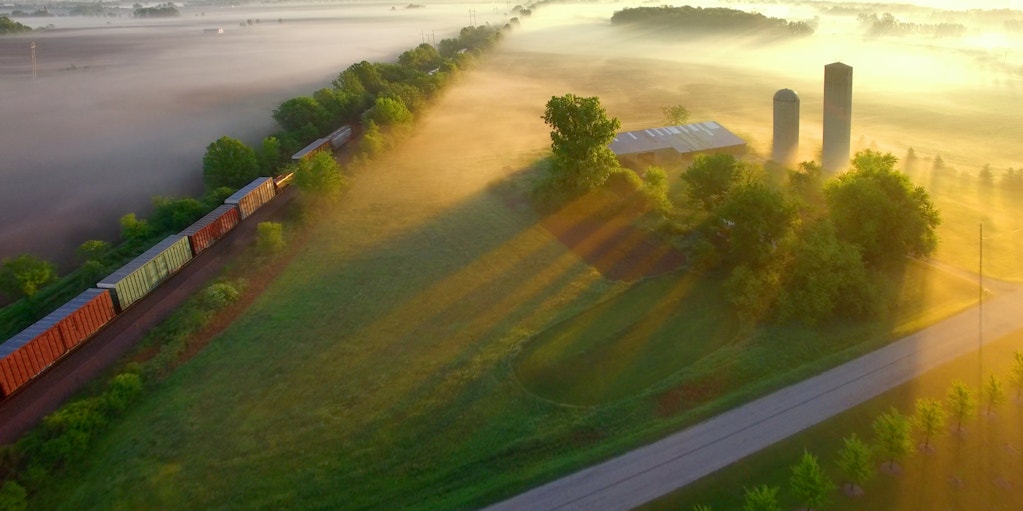
Embracing rail and the last mile to move goods long-distance
Tags
Governments, companies, and consumers are demanding that supply chain operations become more resilient to disruption and more sustainable in a drive to reduce carbon emissions.
The disruption to the logistics industry during the HGV driver shortage accelerated resilient and sustainable thinking, with major players embracing moving more goods long distance via the rail network. But most goods are still moved by Heavy Goods Vehicles (HGV) on the road network due to its flexibility and convenience. The last few years have seen companies who have embraced rail to move goods long distance alongside freight operators reap benefits. We’ve also seen rail infrastructure owners adapting to accommodate the needs of the market. Now is the time for organisations to take advantage of rail and plan operations using up and coming technology, new ways of working, and sustainable last mile deliveries. Here’s why:
1. Rail’s resilience and flexibility
Disruption to HGV-dependent supply chain operations have proven the rail freight market is much more resilient as it relies less on human resources. There is currently an estimated shortage of 400,000 HGV drivers in Europe – placing the long-term reliability of the industry into question. As the online shopping industry booms, there are more favourable working conditions for HGV qualified drivers leaving the HGV industry for transporting shorter, local, and lighter deliveries in vans.
In 2021, Tesco teamed up with rail freight operating companies in response to HGV driver shortages to deliver and refrigerate goods long distance within the UK. They’ve recently extended their partnership with DRS Services refrigerated trains – taking 40 lorries off the road and saving 9,000 tonnes of CO2 for every journey they make together. Tesco are seeing the advantages of this partnership in terms of resilience and efficiency, as HGV delivery via road travel is susceptible to congestion and unforeseen disruption to the road network. However, congestion on the rail network is managed centrally, meaning punctuality is more likely.
To future-proof logistics operations that require long distance delivery, organisations should relocate their hubs to rail connected premises, where there is access to the rail network, to link warehousing and rail. Infrastructure owners are increasingly making premises available and willing to work with organisations alongside freight operating companies. Some companies, such as Amazon, are relocating their logistics hubs in the United States to take advantage of connectivity to the rail network. Likewise, Tesco has recently invested £5m into new rail freight facilities in the Port of Tilbury.
2. Integrating operations with last mile delivery
Rail freight won’t be able to deliver straight to customers’ doors. But the UK government wants towns and cities to have a ‘specific solutions for their specific needs.’ This means towns and cities of the future will have ’hub-and-spoke’ infrastructure where rail will likely move goods long distance with the last mile of delivery being completed via cargo bikes, electric vans, and drones.
There’s lots of investment in green last mile journeys with growth projections now exceeding pre-Covid forecasts. Organising logistics seamlessly between rail freight and last mile delivery, especially with greener methods than vans, will see companies improve their customer service by improving efficiency of delivery whilst achieving key sustainability targets. We’ve seen this happen already with cargo from medical supplies to premium quality food being delivered long distance by InterCity Rail Freight (ICRF) trains and unloaded at rail stations to a push bike courier, ready for delivery to customers.
3. Connecting supply routes
In the UK and Europe, rail infrastructure owners are creating opportunities for more goods to be moved long distance, by rail, on a better-connected network, driven by policy makers and logistics companies to improve connectivity. The Port of Antwerp has recently improved connectivity via rail to 14 European countries and counting to attract rail freight customers. Likewise, in 2022, further European routes with rail freight services were established, building on the momentum. This gives organisations delivering goods across borders opportunities to deliver more sustainably and efficiently using rail.
4. Technology and partnership
For organisations to unlock the efficiency and the economic and environmental advantages that rail offers, they must change their ways of working and approach logistics by working with freight operating companies and infrastructure managers to identify the premises, access, and technology needed to suit their needs. In a future world where customers demand goods to be delivered quicker and in a more sustainable way, having the right partnership and technology, such refrigerated containers or containers that have tracking technology to collect real time data, is key to optimising operations for a more efficient and sustainable freight supply chain.
Explore more








